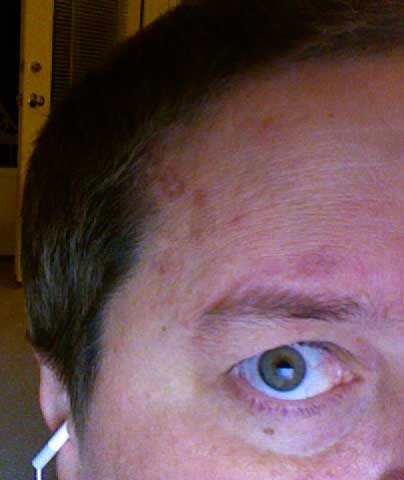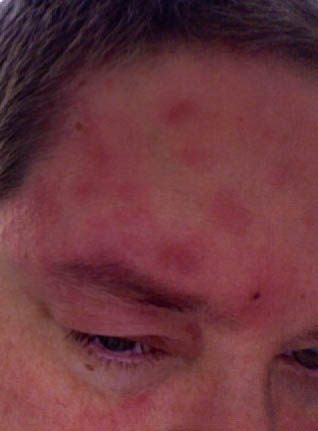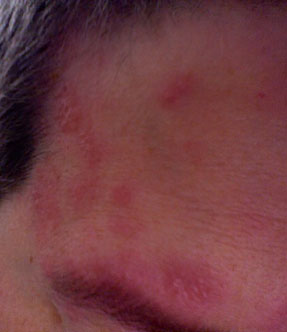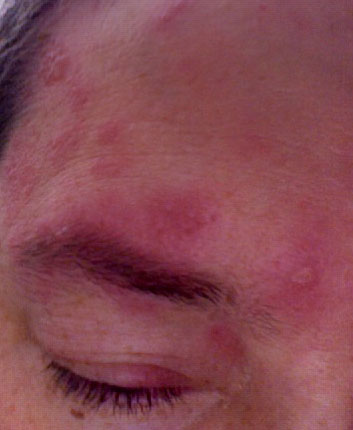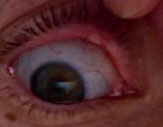This is a press release from the International Myeloma Foundation.
I was on Revlimid with high dose dex for some time back in 2005, I think. I remember being miserable on the high doses of steroids and that my MM progressed after I cut back. We figured the Revlimid didn’t work for me. But that doesn’t mean that it might not work if I added Biaxin. It’s one more thing I can try when I have to start treatment again. The thought of having to take steroids again kind of causes a feeling of anxiety.
–BiRD Study (Biaxin®-Revlimid-Dexamethasone) Provides Evidence of Deep Complete Response Rates In Newly Diagnosed Multiple Myeloma–
North Hollywood, CA, January 4, 2008 – The International Myeloma Foundation (IMF)—supporting research and providing education, advocacy and support for myeloma patients, families, researchers and physicians—today said updated data from the Phase II BiRD study provide a new option for newly diagnosed patients with multiple myeloma whether or not they proceed to stem cell transplant. The findings show a superb overall response rate of 90.3%. 38.9% of the patients achieved a complete response (using EBMT criteria) and 73.6% achieved a 90% or greater decrease in m-protein levels. Using the new International Myeloma Working Group Criteria—recently developed to better define the magnitude of a complete response by a panel of experts led by Brian G.M. Durie, M.D., chairman and co-founder of the IMF—30.6% of the patients achieved this new stringent complete response* (sCR). The findings have been published in the online version of the journal BLOOD.
The BiRD regimen is made up of REVLIMID® (lenalidomide) plus a low dose of the steroid dexamethasone, and adds Biaxin® (clarithromycin). The BiRD treatment did not impede stem cell transplantation, and demonstrated two-year event-free survival rate of 85.2% for patients who underwent stem cell transplant and 75.2% for those who continued on therapy without transplant. Median event-free survival time was not reached.
In addition to the response criteria, the findings from the BiRD study, like a previous study of REVLIMID with low-dose dexamethasone, show response deepening over time: the average time to partial response was just over six weeks, but average time to complete response was 22 weeks, and stringent complete response was reached at 38 weeks.
"This is an exciting time for the treatment of myeloma," said Susie Novis, president and co-founder of the IMF. "We now have multiple studies showing improved response and survival with various regimens including REVLIMID/dexamethasone in previously treated and newly diagnosed patients, DOXIL®/VELCADE® for previously-treated patients who want a steroid-free regimen, and thalidomide/melphalan/prednisone in older patients not eligible for transplant."
Myeloma, also called multiple myeloma, is a cancer of the bone marrow that affects production of red cells, white cells and stem cells. It affects an estimated 750,000 people worldwide, and in industrialized countries it is being diagnosed in growing numbers and in increasingly younger people.
The data were published in an article by lead author Ruben Niesvizky of the Multiple Myeloma Service, Division of Hematology and Medical Oncology, Weill-Cornell Medical College, New York Presbyterian Hospital-Cornell Medical Center.
* sCR requires complete absence of M-protein by immunofixation, normal free light chain ratio and a negative marrow biopsy by immunohistochemistry.
ABOUT THE INTERNATIONAL MYELOMA FOUNDATION
The International Myeloma Foundation is the oldest and largest myeloma organization, reaching more than 165,000 members in 113 countries worldwide. A 501 (c) 3 non-profit organization dedicated to improving the quality of life of myeloma patients and their families, the IMF focuses in four key areas: research, education, support and advocacy. To date, the IMF has conducted more than 120 educational seminars worldwide, maintains a world-renowned hotline, and operates Bank on a Cure®, a unique gene bank to advance myeloma research. The IMF was rated as the number one resource for patients in an independent survey by the Target Research Group. The IMF can be reached at (800) 452-CURE, or out of the United States at (818) 487-7455. More information is available at www.myeloma.org.
Media Contact: Stephen Gendel or Jennifer Anderson (212) 918-4650
